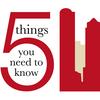Metro Denver has clocked some of the strongest home price gains in the country during this economic expansion, which if it survives to June will rank as the longest in U.S. history.
But in the second half of this year, the housing market here and in other cities has cooled, with sales slumping and the inventory of unsold homes rising. And while annual price gains are still solid, the median price of homes sold continues to drop from the peaks reached this summer.
Some agents argue the economy remains strong and the slump is a more severe version of the usual seasonal slowdown, one that will rectify itself early next year when sales normally pick up. Maybe, but when the housing markets last started heading south about 12 years ago, the most overheated cities like Phoenix, Las Vegas and Miami suffered the worst price declines.
Does a similar fate await Denver, Seattle and San Francisco and other leaders this time around?
Most forecasters don’t think so, in part because the supply of homes available is much more limited and lenders have been much more disciplined in issuing loans than last decade. But the ride could get bumpy, especially if mortgage rates keep rising.
“We predict that the housing market will continue to cool into the first half of 2019,” Redfin chief economist Daryl Fairweather said in a forecast on his blog
And that cooling will be felt the most in metro areas that ran the hottest in the first half of 2018, places like Seattle, San Francisco, San Jose, Calif., San Diego, Los Angeles, Denver and Honolulu, Fairweather predicts.
“The market is shifting right now more towards a buyer’s market than a seller’s market,” said Martin Mata, a Redfin agent in Denver. He is working on 30 listings set to hit the market in the first quarter. A year ago, he had only 15 to 20 queuing up.
“I saw the slowdown in the market in June of this last summer,” Mata said. With no indication that conditions are about to reverse, he expects the inventory of homes to swell even further, putting more pressure on sellers.
And he is noticing that the market, like a pond about to ice over, is cooling the most on the edges, on the periphery on the metro area, and not in the center.
How much the housing market slumps will depend on how well the economy holds up, how high interest rates go and how good a job agents do in helping sellers finding the right listing price.
Homes priced correctly to reflect the changes in the market will move faster, while those that aren’t could linger and clog up the market, Mata said.
But not every forecast agreed with the one from Redfin for a continued cooling. Forecasts from Zillow and Trulia call for continued strength in Denver’s housing market next year.
Zillow’s home price index for metro Denver was up 6.4 percent for the year through November and a forecast for the next 12 months calls for a 6.8 percent rise in the home price index for 2019.
“Unfortunately, it’s looking increasingly unlikely that we’ll see a meaningful upward surge in inventory any time soon,” said Zillow senior economist Aaron Terraza in a report. “This is a step in the right direction, but there’s a long march to go.”
Zillow and Pulsenomics LLC surveyed 100 real estate experts, mostly economists, and they cited Denver as the housing market most likely to outperform the U.S. average next year, followed by Washington, D.C, Atlanta and Dallas. Only five respondents expected Denver to underperform.
Those who argue against another housing crash often cite the shortage of new homes coming into the market given the number of households forming. Builders produced way too many homes in the first half of the early 2000s, which set the stage for the crash. Chastened and with land more limited and their capacity to build reduced, they have built too few homes this time around.
“Housing market fundamentals of chronically low supply and underproduction since the Great Recession paired with increasing demand drove prices skyward. This is a far cry from the speculation and irrational exuberance that characterized the housing market pre-crisis,” said Cheryl Young, an economist with Trulia.
Young also said it is important to realize that slower growth in prices isn’t the same thing as falling prices, which are more harmful.
The median list price for a starter home in metro Denver was still up 9.1 percent year-over-year in the fourth quarter. A year ago, the rate of increase was running around 12.8 percent, according to counts from Trulia.
“The boost in supply and higher lending costs will likely put more downward pressure on prices but buyers should realistically expect these changes to happen slowly and gradually,” said Young.
Higher interest rates are usually cited as what put the brakes on the housing market in the second half of 2018. Home prices rose in part because falling interest rates allowed buyers to afford more. But prices haven’t dropped commensurate to the gain in borrowing costs. More buyers are finding themselves priced out. That should push up the inventory of unsold homes to rise and cause listings to linger longer on the market.
But higher interest rates can also dissuade sellers from listing a home. Someone sitting on a 30-year mortgage at 3.5 percent needs a strong motivation to let that go and buy a higher-priced home with more expensive money. That could cap how many homes get listed on the market next year.
Lou Barnes, a senior mortgage lender at Premier Mortgage Group in Boulder, notes that the threshold of pain to watch on the 30-year mortgage, one associated with a recession, is 2 percentage points. Given the lows in mortgage rates of 3.5 percent, that would translate into rates of 5.5 percent.
Related Articles
-
Boulder leaders propose all-winter emergency shelter for homeless
-
Push to limit home construction in Lakewood sees new life after key court win
-
Price increases for goods and services in Denver drop below U.S. average
-
Home price increases continue to slow across the country
-
Housing, health care leave Boulder County’s, Longmont’s aging community at risk of homelessness
After topping 5 percent in October and November, the cost of a 30-year loan has backed down to 4.75 percent, according to Bankrate.com.
Population growth is another driver of demand for housing. The U.S. population is up nearly 6 percent since 2010. But Colorado’s population has grown 13.2 percent, more than twice as fast.
That translates into 666,248 more people living in the state on July 1 than on April 1, 2010, according to a report from the U.S. Census Bureau. Colorado ranked fifth for the percentage increase in its population after the District of Columbia, Utah, Texas and Florida.
But the pace of annual gains, which topped out at 1.9 percent in 2015, are now running closer to 1.4 percent. Higher housing costs along the Front Range also appear to be pushing some people to look elsewhere.


